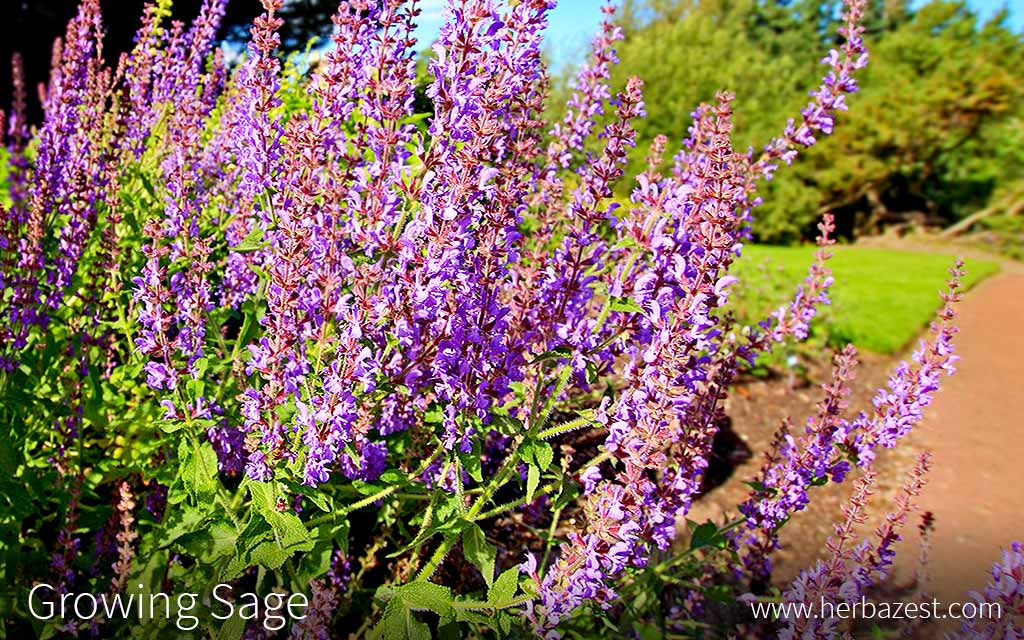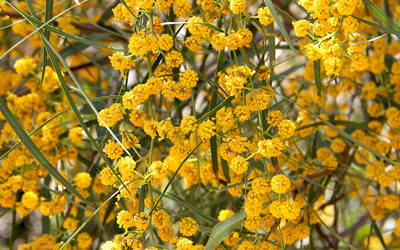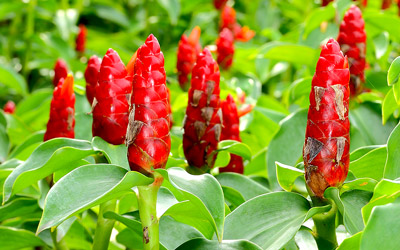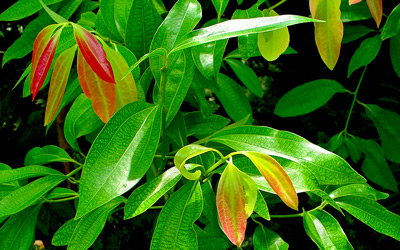Sage will grow to its best potential if it is given some care and attention. The conditions it is subjected to will all play a big part in the herb's growth rate and pattern; therefore, an understanding of what it prefers is helpful. The following growing guidelines offer valuable advise about how to cultivate and take care of sage at home.
1. Preparing the Soil
When it comes to aromatic herbs, like sage, compacted soils must be avoided because they are more likely to get waterlogged when irrigation is applied, which can cause problems for the plants' health.
Whether grown in an outdoor herb garden, or in a container inside, sage should be planted in soil is kept moist but well-drained.
The optimal soil type is loamy sand and slightly acidic, with an ideal pH of 6.1 - 6.5. It should also be situated where there is access to full sun. Sage is fairly hardy, and can withstand frost when it is well-established; however, it will thrive best in temperatures of around 60 - 70°F (15 - 21°C).
Before sage is planted, the area should be tilled, hoed, and properly leveled in order to allow good irrigation, avoiding the risk of waterlogging. An all-purpose fertilizer can be mixed with the soil to ensure germination and healthy growth. Seeds and seedlings should be planted in well-watered soil.
2. Planting
Planting Sage Outdoors
Sage can be propagated from seeds or cuttings, and it is also recommended to divide the roots of established plants every few years in order to revitalize them. The herbs should be planted 18 - 24 inches (45 - 60 cm) apart so that they can have enough room to grow, as well as adequate aeration. They should also be protected from strong winds.
For successful germination, seeds should be exposed to an average temperature of 70F (21C) for around three weeks. It is for this reason that many people begin cultivation indoors and then transplant the seedlings outside when they are somewhat established. Seeds and new shoots should be planted outside after the last frost has passed. The best time for sowing or planting seedlings is March to April.
Planting Sage Indoors
Sage can flourish inside if it is grown in a pot or container, in a sunny position such as in a sunroom, greenhouse, or on a windowsill. The most important factors to take into consideration are that the plants need access to sun for around six to eight hours per day, and the soil should be consistently moist but well-drained.
If there is not enough natural sunlight, fluorescent light may be required. However, in this case, the amount of exposure must be doubled to benefit the plants. For every one hour of sun, plants will need two hours of artificial light. Sage should be positioned between 5 - 15 inches (12 - 38 cm) away from the lightbulbs.
When planning to transplant seedlings outside, seeds should be sown indoors six to eight weeks before the last frost.
3. Plant Care
Watering
It is important to provide regular irrigation, especially for young plants. Depending on weather conditions, sage should be watered every one to two days until it is fairly well-established. After the seedling stage has passed, it should be irrigated only when the soil is dry to touch. Once a week is usually sufficient.
It is important that the soil has an adequate drainage system in order to ensure it does not become saturated. Overwatering can be detrimental to the health of sage.
Fertilizing
It is acknowledged that the regular use of fertilizers can have an effect on the taste of the herb, causing sage to become bland and earthy. Having said this, if the plant is struggling through the growth process, it can be helpful to add a layer of compost, or a solution of "compost tea." These will provide extra nutrients, which can give the plants the boost it needs.
Pruning
Sage should be pruned regularly in order to keep it healthy and thriving. On established plants, it is recommended to cut away the bare stems in spring, as this will stimulate new growth. Most gardeners do so in order to have sage always available for culinary use; the leaves and stems can be removed as often as they are required, and new components will grow back in their place.
Weed Control
When growing sage outdoors, there is a risk of weeds appearing close by. These can either be removed by hand or, if the surrounding herbs are developed and hardy enough, a weed killer can be applied. However, care should be taken if the herb is meant for consumption, since some herbicides can be harmful to young plants, especially during seedling stage.
4. Pest & Disease Control
Pests
Sage is usually a pest-free plant, but it may be occasionally affected by bugs, most commonly capsid bugs and rosemary beetles. Capsid bugs feed on the sap of the plant and leave small brown holes in the foliage. Rosemary beetles breed on and consume the leaves of sage. Aphids and whiteflies are also seen sometimes, as well as slugs and snails.
All of these pests should be dealt with as soon as they become apparent in order to limit their spread. They should be hand-removed from young plants, but pesticides can be used on mature sage. It is important to thoroughly wash the herb before consuming, especially if a pesticide has been used.
Diseases
Sage is rarely affected by diseases, but sometimes it can develop powdery mildew, especially if the aerial components are consistently damp. This can be detected by sight: the leaves will appear silver-gray with a powder-like substance on them. This will stunt growth and cause the foliage to shrivel and wilt. It can be avoided by ensuring that there is enough space between plants for air flow, and that there is access to enough sun so that the leaves and stems can dry out. Applying irrigation at soil level rather than overhead will also help in avoiding this. Infected areas should be removed to stop the disease from spreading.
Wildlife
Aside from insects, there are a few mammals known to consume sage from the garden. Small creatures - including rabbits, foxes, and squirrels - will eat the herb. If they have access, deer have also been found to enjoy eating sage.
5. Harvest
Leaves can be harvested at any time throughout the plant's growth cycle; however, it is suggested to harvest sage lightly during its first year in order to allow the plant to fully develop. When it is mature, one sage plant can be fully harvested up to three times in one season. In fact, this is encouraged in order to stimulate vigorous growth.
6. Storage
It is generally agreed that sage leaves are more beneficial when they are fresh. After harvesting, the cut components can be stored in an airtight container in the refrigerator, where they will stay fresh for several days.
Alternatively, the leaves and stems can be dried before being stored in a airtight container in a cool, dry place. Interestingly, sage's lemony, camphor-like, slightly bitter flavor and smell are stronger once the plant has been dried. If properly stored, the herb can have a shelf life of several years.
A staple flavoring ingredient in many cuisines, sage can be found in kitchens and gardens across the world. Because it has pretty flowers and can thrive with very little maintenance, it is a favorite among novice and experienced gardeners alike.





